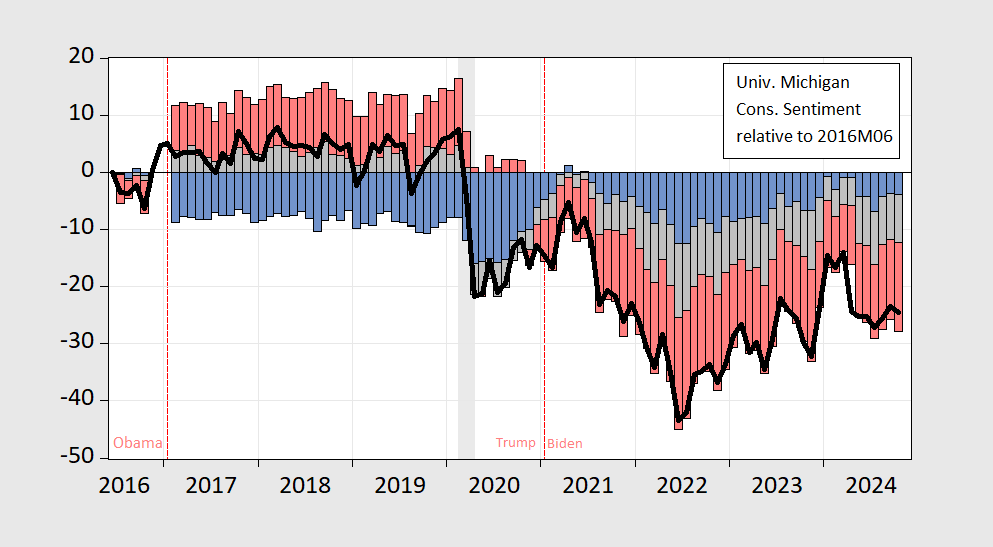Michigan consumer sentiment declined, below consensus (68.9 vs 70.9). Why?
First, consider a text based index of economic news, compared against consumer sentiment disaggregated by partisan grouping.
Figure 1: University of Michigan Consumer Sentiment for Democrats (blue, left scale), for Independents (gray, left scale), for Republicans (red, left scale), Shapiro, Sudhof and Wilson (2020) Daily News Sentiment Index (green, right scale). The News Index observation for September is through 10/6/2024. Source: U.Mich, SF Fed.
Notice that Republican/lead Republican sentiment declines even as text based news rises. The gap is more pronounced disaggregating Sentiment into Current conditions and Expectations, and focusing on Expectations.
Figure 2: University of Michigan Consumer Expectations for Democrats (blue, left scale), for Independents (gray, left scale), for Republicans (red, left scale), Shapiro, Sudhof and Wilson (2020) Daily News Sentiment Index (green, right scale). The News Index observation for September is through 10/6/2024. Source: U.Mich, SF Fed.
Republican/lean Republican seems to have an outsize impact on the negative movements in the overall consumer sentiment, as shown over the long term picture here.
Figure 3: University of Michigan Consumer Sentiment relative to 2016M06 (bold black line), contribution from Democratic/lean Democratic (blue bar), from Independent (gray bar), and from Republican/lean Republican (red bar). NBER defined peak-to-trough recession dates shaded gray. Source: University of Michigan, NBER, and author’s calculations.
Republican/lean Republican sentiment has had an outsized impact on overall Sentiment even though they only have about 1/3 weight in the overall sentiment.
















